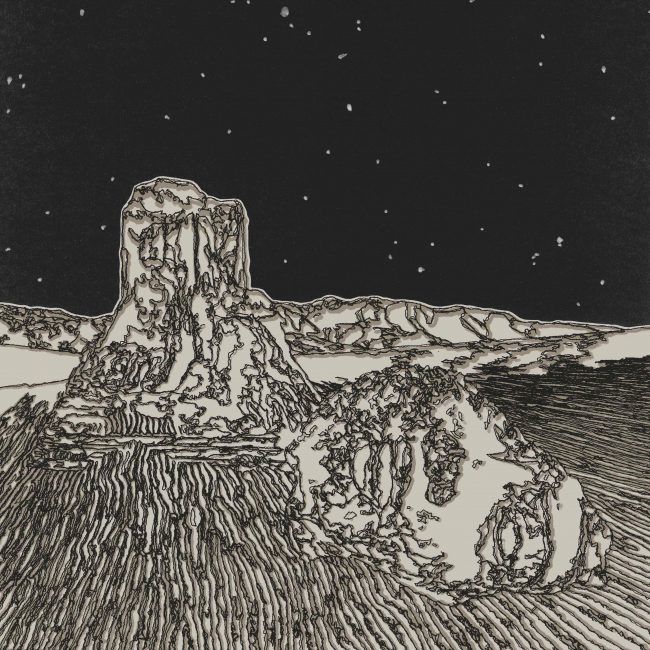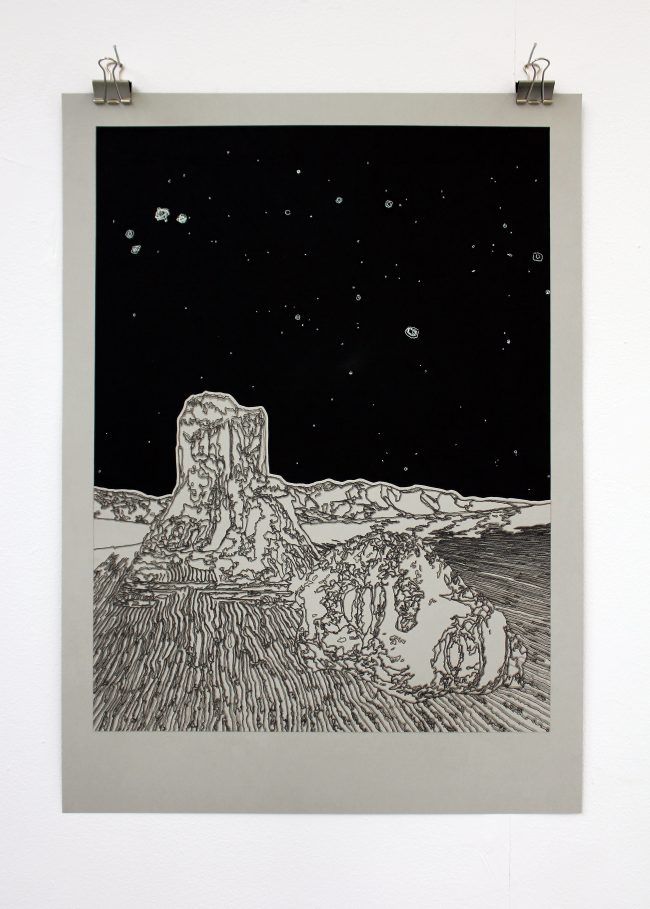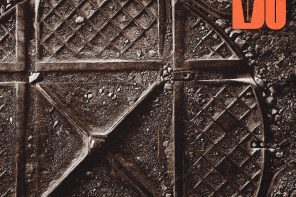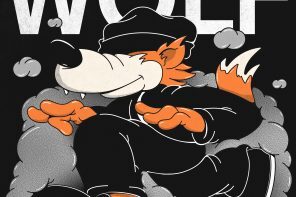
Omena travels south of the Mediterranean Sea with antique maps and compass in hand for the release of Parviz‘s Zerzura EP. This record features four songs of romance and reverie, taking you through a dizzying jazz journey, full of twists and turns; starting with emboldened trumpets, only to end on a handful of quaint piano notes. As dusk settles upon the dunes, the mirage has now vanished, and the forlorn hope turns into a soul-searching journey.
To capture the atmosphere of the piece, Parviz has partnered with artist Rickard Eklund to put together the cover art for the release. Much like Parvis himself, Mr. Eklund was inspired a great deal by the mysticism of the region, which he goes onto explain below in an interview where both delve into the influences behind their collaboration.
As you read through their discussion that touches on everything from Percey Shelley’s Ozymandias to the music of Lounge Lizards, Yuseef Lateef and Duke Ellington, make sure to listen to Parivz’s forthcoming track taken from the EP titled “Odalisque Au Fauteuil Noir.” It will certainly set the mood and get you into the mindset of partaking in a little discovery and introspection yourself.
Make sure to pre-order yourself a copy Zerzura by clicking on the link here! It’s set to come out June 21st.
[soundcloud url=”https://soundcloud.com/boltingbits/premiere-parviz-odalisque-au-fauteuil-noir” /]
INTERVIEW

Parviz: First of all, the front cover. This is a very personal take on the colossus of Ramses II, the statue that inspired Percy Bysshe Shelley to write his famous poem “Ozymandias”. Can you take us through your creative process for this piece? What inspired you and influenced you along the way?
Rickard Eklund: After going back to that poem I tried to bring out the image that formed in my mind and wasn’t too concerned with any specific statue that might have inspired Shelley, or any specific desert or starry sky either for that matter. It’s all fused together from various archival images to overlay what I visualized, basically. I mostly wanted to maintain the poetry and mystique that you had presented me by the rich narratives in your music and text while adding my own flare to it. It’s maybe personal, but I feel it landed in being very illustrative and quite simple like that, in a good way. Early on I was looking at Persian miniatures to include lots of the many details and references in the song titles and liner notes, but after a few tries, it was scaled back to mostly just the desert, the image of the broken visage and the tale of time it represents, The style ended up somewhere between cartoonist Moebius and sculpturer Mark Manders, but of which I’m a fan of. I think it became an image not typically bound by any era, being possibly both very ancient and possibly quite future, simultaneously digital and analog and which I hope ultimately compliments your vision, as that was my inspiration.
Parviz: I know for a fact that you’ve got a pretty multi-faceted approach of art: borrowing ideas and techniques from very distinct fields, be it handmade printing, automated drawing machines or glitch art, and blending all that together to create something unique. How you come up with these new techniques? And do you have some favorite ones?
Rickard Eklund: Yes, I rarely do the same thing twice in between projects, which isn’t the smartest way of production, but it’s how I keep it interesting for myself. My favorites are the ones I haven’t quite figured out yet, as they’re the ones that occupy my thoughts most. These specific drawings were made using a Polargraph drawing machine, which is a minimalist wall-mounted vector printer, an artwork in its own right. It’s quite a fickle thing and the meeting of coded movement and the resistance of paper and pen creates these very shaky, seismographic lines that are never the same, plus doing multiple layers of the same drawing with different pens furthermore makes the offset always different and hard to control, but certainly unique. I like things to have a creation of their own and present surprising effects. That’s the joyful reward I look for in engaging with any new project.
Parviz: Lastly, I know the Ozymandias illustration might soon have a life of its own, outside the realm of the album art. Can you tell us a little bit more about that?
Rickard Eklund: Yes, I’ve been making an edition of drawings of the cover image in a larger A2 format. All slightly different, like earlier described, made with marker, fine liner, and acrylic on thick grey and black paper. They will be offered for sale at time same time as the album comes out. So, if anyone really enjoys the album art I hope they’ll consider getting an original rendition, which they can get through my website
Rickard Eklund: Being very storybook-like, full of myth, wonder and mood, where do you imagine the listener listening and where are they being transported? What light of time is channeled in these songs?
Parviz: I’m happy you bring that up! There were a few writings that actually had an immense influence on me, and were instrumental to the making of this EP — like Mina Loy’s “Lunar Baedeker,” or Percy Bysshe Shelley’s “Ozymandias.” So it’s very story-book like in a way.
Now, regarding the journey: of course, the very name of the EP suggests you’d embark straight to Zerzura, west of the Nile, in present-day Libya, sharing a jeep with a couple of 19th explorers or Egyptologists. That’s the first reading.
But it could actually come to be more than that; for anyone that gets a chance to look at the back cover, there’s that quote from Antoine de St-Exupéry that reads, “Deep in the seemingly empty Sahara, a secret drama is being played that stirs the passions of men.” The meaning of this journey lies less in the point of arrival than in the emotions it evokes along the way. Zerzura could be just a dot on the horizon, finding your way there will conjure up some moments of self-reflection, soul-search. And that’s for me the whole meaning of the opus. Wherever this EP takes you, that’s the message I wanted to put across.
Rickard Eklund: As far as production goes, for me, listening to this EP I’m reminded of the music of the Lounge Lizards, Yuseef Lateef and Duke Ellington’s Far East Suite and well as manners of space jazz, but there’s also the modern looping and digital production necessarily at the base of it. With the many instruments, bells and effects, in your great attention to detail, what are your tactics for maintaining the soft, smokey and organic quality in the music? And what would you highlight as your main inspirations when crafting this project?
Parviz: Thank you, I feel flattered by the comparisons! I have to say, Yusef Lateef’s “Eastern Sounds” is one of my favorite oriental jazz albums, right next to Dorothy Ashby’s “Rubaiyat” or any piece from Lloyd Miller’s body of work.
As for the songs themselves, there’s not a single songwriting process I always stick to, but it often starts with a baseline, or a Rhodes hook. Laying down a simple idea, a few notes or a chord progression, and then playing around it to see how it fares organically. Then you can build up the song, by adding a few other instruments, solos, bridges.
Ultimately samples pick up the slack. Sampling’s a very nice way to add body to your music, and if you’re leaving enough room for the more traditional instruments to breathe, it makes up for a nice dialogue. Written and sampled parts can talk back. Take “Odalisque Au Fauteuil Noir,” for example. Bass and electrical piano parts are played and interact a lot with the horns. The lines between the two often get blurred, and you can’t quite tell which one’s sampled, and which one’s being played. And I love that!
In terms of inspirations for this project, I have to mention Santana’s 1972 “Caravanserai.” That was a pretty big influence. I’ve always been a huge Santana aficionado, but I overlooked this one in my teenage days. It was a more complex and esoteric album than the previous ones. As years go by, little by little, it started to grow on me, and its hidden beauty fully hit me. “Song of the Wind” and “All the Love of the Universe” are such masterpieces, as is the album itself.
I can also single out one particular album from the Wynton Kelly Trio “Full View.” There’s a song on it called “What A Diff’rence A Day Made,” originally written by María Grever in the mid-30s, and it’s one of the best piano pieces I’ve ever heard, in my humble opinion. There’s emotion in every single note. A real sleeper.



